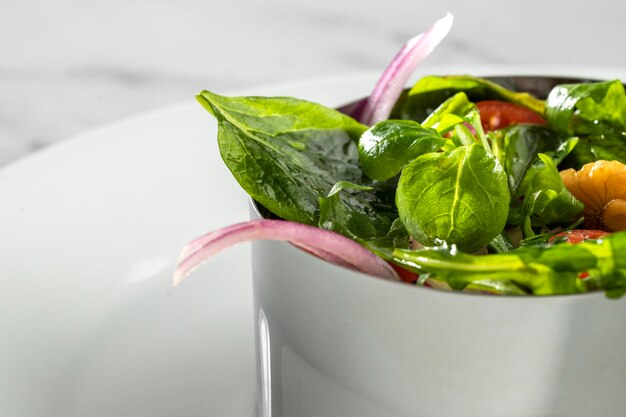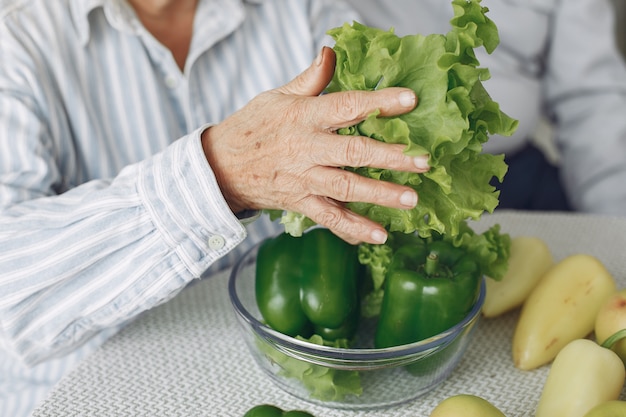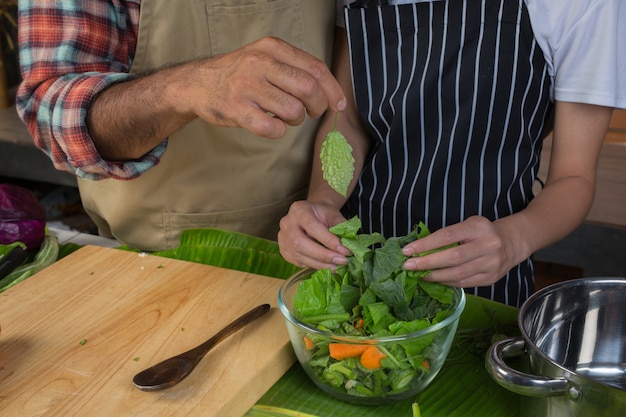Ah, collard greens. These leafy green wonders are a staple in many kitchens, offering a hearty and flavourful addition to countless dishes. But getting them just right can be a bit of a culinary puzzle, especially for beginners. Overcook them, and you'll be left with a mushy mess. Undercook them, and they'll be tough and chewy. So, how do you achieve that perfect balance? Let's delve into the world of collard greens cooking time and uncover the secrets to cooking them to perfection.
Part 1: The Great Collard Green Conundrum

Understanding the Timing
The question "how long to cook collard greens?" is a bit of a culinary riddle. It's not a one-size-fits-all answer, as several factors influence the optimal cooking time. It's about finding that sweet spot where the greens are tender enough to melt in your mouth but still retain a bit of that satisfying bite. No one wants a limp, soggy pile of leaves, trust me. I've been there, and it's not a good look!
Remember that time I tried to impress my Mum with a side dish of collard greens? I followed some recipe I found online, but it didn't quite go to plan. I ended up with a mushy green mess that was more reminiscent of a slimy swamp than a delicious side dish. It wasn't my finest culinary hour, let's just say. From that experience, I learned a valuable lesson: cooking time matters!
Factors Influencing Cook Time
The perfect collard green cooking time depends on a few key factors. Let's break them down, shall we?
- The Age of the Greens: Think of it like this: younger greens, like those fresh from the farm, are more tender and will cook faster than older greens. These older greens are still perfectly delicious, but they'll need a bit more time on the stove. So, keep an eye on the leaves – bright green and firm are good signs of youth, while duller colours and a slightly wilted texture indicate a more mature green.
- The Method of Cooking: Simmering, steaming, and pressure cooking all have their own unique approaches to cooking. Simmering is a slow and steady method that allows the flavours to meld, while steaming is a quicker and healthier option that retains more nutrients. Pressure cooking is a super-fast way to cook greens, perfect for busy weeknights. We'll explore each of these methods in more detail later.
- The Amount of Liquid: This one's important. If you're simmering your collard greens, the amount of liquid you use directly impacts the cooking time. Too little liquid, and the greens will dry out before they're cooked. Too much, and they'll be swimming in a watery broth. It's all about finding that happy medium where the greens are submerged but not drowning.
Part 2: Getting Ready for the Cooking Process

Preparing Collard Greens for Cooking
Before you even think about putting your collard greens on the stove, give them a bit of pre-cooking love. This step is crucial for ensuring a smooth and delicious outcome. Here's my tried and true method for prepping collard greens:
- Wash and Trim: First things first, give your collard greens a good rinse. Dirt and debris can hide in those lovely leaves, so it's important to make sure they're clean. Now, for the trimming. Those tough stems need to go! You can snap them off with your fingers or use a knife to cut them off. I usually opt for the snapping method – it feels a bit more rustic and authentic.
- Chop or Roll: This is where you get to decide how your collard greens will look on your plate. If you're going for a quick cook, chopping the greens into smaller pieces will do the trick. If you prefer larger pieces, try rolling them up tightly and then slicing them across the roll. This method creates impressive-looking, slightly ribbon-like pieces.
- Blanching (Optional): Blanching is a technique where you quickly plunge your greens into boiling water for a short time, then plunge them into ice water to stop the cooking process. It's a bit of an extra step, but it helps to soften the greens and reduce the overall cooking time. It's not a necessity, and I often skip it, but I know some folks swear by it.
Part 3: Simmering - The Classic Method

Simmering for that Deep Flavour
Simmering is the classic method for cooking collard greens, and for good reason. It allows those lovely greens to develop a deep, earthy flavour that's just irresistible. Plus, it's a simple and forgiving method, perfect for beginners.
First, find a large pot – you'll need plenty of space for those greens to move around. Add a generous splash of olive oil, then gently sauté your chopped onion or garlic. You can also add a bit of bacon or smoked ham for a smoky, salty flavour, but this is entirely optional. Personally, I like to add a pinch of red pepper flakes for a little kick – it adds a hint of heat that complements the earthy flavour beautifully. Once your aromatics are fragrant, add your chopped collard greens and give them a good stir to coat them in that delicious oil and seasoning. Now comes the important part: add just enough water or broth to cover the greens. Don't drown them!
Tips for Simmering
Here are a few tips to ensure your simmered collard greens turn out perfectly:
- Cover the Pot: Cover your pot with a lid to create a steamy environment. This helps the greens cook more evenly and prevents them from drying out.
- Reduce the Heat: Once the liquid comes to a boil, turn the heat down to a low simmer. You want a gentle simmer, not a raging boil.
- Stir Regularly: Stir those greens every 10-15 minutes to ensure even cooking and to prevent sticking. You don't want any burnt bits ruining the party!
- Taste and Adjust: As your collard greens simmer, take a taste and see how they're coming along. Add more salt, pepper, or other seasonings as needed to achieve your desired flavour profile.
Time for Simmering Collard Greens
The simmering time for collard greens varies depending on the factors we discussed earlier. As a general guide, here's a rough estimate for simmering:
| Type of Collard Greens | Approximate Cooking Time |
|---|---|
| Young and Tender | 20-30 minutes |
| Mature and Tougher | 45-60 minutes |
Remember, these are just guidelines. Taste your greens as they cook to determine their doneness. They should be tender but not mushy, with a lovely deep green colour.
Part 4: Steaming - A Lighter Option
Steaming for a Healthier Choice
If you're looking for a healthier way to cook collard greens, steaming is a fantastic option. It retains more nutrients than simmering and gives you a lighter, brighter flavour. Plus, it's incredibly simple to do.
You'll need a steamer basket that fits into a saucepan. Add a small amount of water to the saucepan and bring it to a simmer. Place your collard greens in the steamer basket and cover the pot. Let the steam work its magic! Steam the greens until they are tender, which usually takes about 15-20 minutes.
Part 5: Pressure Cooking - A Speedy Solution
Pressure Cooking for Efficiency
For busy cooks who appreciate a fast and efficient method, pressure cooking is a game-changer. It cuts down the cooking time significantly, but it does require a pressure cooker.
Add your chopped collard greens to the pressure cooker. You can also add a bit of liquid, such as water, broth, or even coconut milk, to enhance the flavour. Lock the lid in place and bring the pressure cooker to high pressure. Cook for about 5-7 minutes. Once the cooking time is up, allow the pressure to release naturally. Then, you can open the lid and enjoy your perfectly cooked collard greens. It's that simple!
Part 6: Don't Forget the Seasoning!
Elevate the Flavour
Seasoning is the secret ingredient that transforms ordinary collard greens into an explosion of flavour. It's a blank canvas waiting for your creative touch. Here are some of my go-to seasonings, but feel free to experiment and find your own signature blend:
- Salt and Pepper: A classic combination that's essential for any collard green dish. I like to add a good pinch of both at the beginning and at the end of the cooking process.
- Garlic and Onion: These aromatics add a delicious depth of flavour. You can add them at the beginning of the cooking process, or you can sauté them separately and stir them in at the end.
- Smoked Meats: Bacon, ham hock, or smoked sausage can add a smoky, salty flavour that's simply divine. Just be mindful of the sodium content if you're watching your salt intake.
- Hot Sauce: A splash of hot sauce adds a kick of heat. I'm a big fan of Tabasco, but you can use any kind of hot sauce you like. Just remember that a little goes a long way!
- Vinegar: A touch of vinegar can brighten up the flavour of your collard greens. I like to use apple cider vinegar, but you can also use white vinegar or rice vinegar.
Part 7: Beyond the Basics
Variations for a Delicious Twist
Once you've mastered the basics of cooking collard greens, it's time to get creative and explore the world of delicious variations. Here are a few ideas to spark your culinary imagination:
- Collard Green Soup: Blend your cooked collard greens with broth or cream to create a delicious and hearty soup. You can add a dollop of yogurt or a drizzle of olive oil for a finishing touch.
- Collard Green Fritters: Mix your cooked collard greens with breadcrumbs, flour, and seasonings to make tasty fritters. You can fry them in a pan or bake them in the oven for a healthier option. Add a side of your favourite dipping sauce, such as sour cream or salsa, for an extra burst of flavour.
- Collard Green Wraps: Fill tortillas with cooked collard greens, rice, beans, and other fillings for a satisfying and healthy wrap. Get creative with your fillings – the possibilities are endless!
- Collard Green Salad: Use raw collard greens in a salad for a refreshing twist. Make sure you chop them finely or massage them with a dressing to soften them up a bit. Add your favourite veggies, fruits, and nuts for a nutritious and flavourful salad.
Part 8: A Final Word on Collard Greens
Cooking collard greens is a journey, not a destination. Don't be afraid to experiment with different cooking methods, seasonings, and variations. The more you cook them, the better you'll get at finding the perfect cooking time and flavour profile for you. I'm constantly learning and trying new things with collard greens – it's a never-ending adventure for me in the kitchen. Remember, every journey starts with a single step. So, gather your ingredients, embrace your inner chef, and get cooking!
FAQs
1. Can I overcook collard greens?
Yes, you definitely can! If you cook them for too long, they'll become mushy and lose their flavour. It's always better to err on the side of undercooked, as you can always cook them a little longer if needed. If you're unsure, taste them! They should be tender but still retain a slight bite.
2. What do I do if my collard greens are too salty?
If you've added too much salt, you can try to dilute it by adding more water or broth. You can also try adding a splash of vinegar or lemon juice to balance out the saltiness. Don't worry – it happens to the best of us!
3. How do I know when collard greens are cooked?
The best way to tell if your collard greens are cooked is to taste them. They should be tender and wilted, with a lovely deep green colour. They should not be crunchy or raw. You can also check them by gently pulling a leaf apart – it should come apart easily.
4. Can I store cooked collard greens?
Yes, you can store cooked collard greens in the refrigerator for up to 3 days. Just make sure you let them cool completely before storing them. They can also be frozen for up to 3 months. To freeze, simply store them in an airtight container or freezer bag.
5. Are collard greens healthy?
Collard greens are packed with vitamins, minerals, and antioxidants. They are a good source of vitamin A, vitamin C, vitamin K, and iron. They're also a great source of fiber. So, they're a really good choice if you're looking to add some healthy greens to your diet.
Everyone is watching

How to Cook Frozen Lobster Tails Perfectly: A Step-by-Step Guide
RecipesLobster. Just the word conjures up images of lavish meals, special occasions, and a taste of luxury. But let's...

Pigs in a Blanket Cooking Time: How Long to Bake for Perfect Results
RecipesAh, pigs in a blanket. Just the name conjures up images of those delightful little parcels of crispy pastry en...

Pork Fillet Cooking Time: How Long to Cook It Perfectly
RecipesPork fillet, or tenderloin as it's sometimes called, is a real favourite in our house. It's so versatile, and...

The Ultimate Guide to Cooking Delicious Frankfurters
RecipesLet's face it, we all love a good frankfurter. It's a classic, simple, and always satisfying. But let's be rea...

The Ultimate Guide to Tender, Juicy Pulled Pork
RecipesRight, let's talk pulled pork. It's one of those dishes that just screams "comfort food," doesn't it? I mean...
